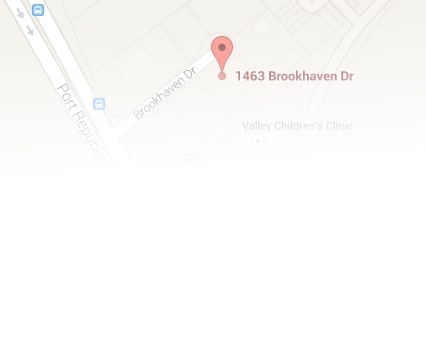On December 17, 2010, President Obama signed into law the 2010 Tax Relief Act. The Act provides for a two-year extension of the Bush income tax cuts along with a host of other changes, most notably an increase of the estate tax exemption to $5 million, and $10 million for married couples.
SIGNIFICANT CHANGES
The significant changes to the generation-skipping tax (GST), and estate and gift taxes for 2010, 2011 and 2012 are:
- A reduction of the estate, gift, and GST tax rates to 35%.
- An increase of the estate tax and GST tax exemptions to $5 million.
- An increase in the gift tax exemption to $5 million for 2011 and 2012.
- Indexing of the estate tax, gift tax, and GST exemptions for 2012.
- A reunification of the estate and gift tax exemptions so that an individual can give away during life or at death up to $5 million for 2011 and 2012.
- An introduction of the concept of portability, which permits the estate of the second spouse to die to take advantage of the unused $5 million tax exemption of the first spouse to die for 2011 and 2012.
- A reintroduction of the estate tax for all of 2010 with the $5 million exemption and a 35% tax rate accompanied by an election for estates of 2010 decedents to opt out of the estate tax and into a modified carryover basis regime for appreciated assets.
- A reintroduction of the GST for all of 2010 with a $5 million exemption but a zero tax rate.
The 2010 Tax Act provision increasing the gift tax exemption from $1 million to $5 million will allow many to make far larger lifetime gifts in 2011 and 2012. The estates of 2010 decedents will now have to make a choice between the estate tax and a modified carryover basis. This will involve comparing the costs of paying the estate tax coupled with a step-up in basis for appreciated assets against analyzing the costs of electing out of the estate tax and taking a carryover basis for assets so that the recipients of appreciated property from the decedent’s estate may pay higher capital gains tax.
Annual Exclusion Gifts
The Internal Revenue Code currently provides an exclusion from gift tax for the first $10,000 (indexed for inflation) given to any donee in any year. The annual exclusion amount is indexed in $1,000 increments. Because of indexing, the annual exclusion since 2009 has been $13,000. Thus, an individual currently can make annual gifts of up to $13,000 to any number of people, without any gift tax on the transfers or use of gift tax exemption. As will be discussed in more detail, a married individual can double the annual exclusion by gift-splitting – using one spouse’s funds and having the non-donor spouse consent to treat gifts made as being made one-half by each of the spouses.
IRA Charitable Rollover
For a legal consultation with a personal injury lawyer, call (434) 817-3100
The 2010 Tax Act extended the IRA charitable rollover provision as originally enacted in 2006. This provision provides an exclusion from gross income for certain otherwise taxable IRA distributions from a traditional or Roth IRA in the case of “qualified charitable distributions.” Qualified charitable distributions are any distributions up to $100,000 per year from an IRA made in 2010 or 2011 directly by the IRA trustee to a “qualified charitable organization” if the IRA owner has actually attained age of 70 ½ at the time of the rollover. The 2010 Tax Act also allows a taxpayer to elect to treat a charitable rollover made in January 2011 as if made on December 31, 2010.
A distribution is to a qualified charitable organization if it is made to a public charity other than one classified as a supporting organization and is not to a donor-advised fund (even if maintained by an otherwise qualifying charity). Contributions to private foundations (other than private operating foundations or conduit foundations) do not qualify for the exclusion. The IRA owner is not entitled to an income tax charitable deduction for any amount excluded from gross income under this provision.
The exclusion is available only for distributions from traditional and Roth IRAs and not for distributions from employer-sponsored retirement plans, SEPs, Keoghs, 403(b) plans, 401(k) plans, SIMPLE IRAs, or profit sharing plans. Distributions must be made directly from the IRA trustee or administrator to the qualified charitable organization. To exclude the distribution from income, the donor must obtain written substantiation of receipt of an IRA distribution from the donee organization that includes a statement that no goods or services were provided.
Portability
The 2010 Tax Act permits a surviving spouse to use the unused portion of the predeceased spouse’s exemption for estate and gift tax purposes, but not for GST tax purposes.
Portability was not in effect until 2011. It applies to a surviving spouse only if the predeceased spouse died after December 31, 2010. As enacted, it applies only until December 31, 2012.
The predeceased spouse’s executor must affirmatively elect portability. The election must be made on a timely filed estate tax return.
Portability can no more than double a surviving spouse’s own exemption and is limited to the unused exemption of the survivor’s last deceased spouse. Someone who has been widowed more than once can only use the exemption of the most recent deceased spouse. And no one can use exemption of a deceased spouse which that deceased spouse in turn received by surviving a predeceased spouse.
Example 1: Assume that Husband 1 dies in 2011, having made taxable transfers of $3 million and having no taxable estate. An election is made on Husband 1’s estate tax return to permit Wife to use Husband 1’s deceased spousal unused exclusion amount or unused exemption. As of Husband 1’s death, Wife has made no taxable gifts. Thereafter, Wife’s exemption is $7 million (her $5 million basic exemption plus $2 million of Husband 1’s unused exemption), which she may use for lifetime gifts or for transfers at death.
For many couples, the simplicity of portability, the second step-up in basis for appreciated assets (which a credit shelter trust does not receive), and the avoidance of state estate tax at the death of the first spouse to die in states with an estate tax and no state-only QTIP election will be more dominant consideration.
ADDITIONAL HIGHLIGHTS
Two-year extension of all current tax rates through 2012
- Rates remain 10, 25, 28, 33, and 35 percent
- 2-year extension of reduced 0 or 15 percent rate for capital gains & dividends
- 2-year continued repeal of Personal Exemption Phase-out (PEP) & itemized deduction limitation (Pease)
Temporary modification of Estate, Gift and Generation-Skipping Transfer Tax for 2010, 2011, 2012
- Reunification of estate and gift taxes
- 35% top rate and $5 million exemption for estate, gift and GST
- Alternatively, taxpayer may choose modified carryover basis for 2010
- Unused exemption may be transferred to spouse
- Exemption amount indexed for inflation in 2012
AMT Patch for 2010 and 2011
- Increases the exemption amounts for 2010 to $47,450 ($72,450 married filing jointly) and for 2011 to $48,450 ($74,450 married filing jointly). It also allows the nonrefundable personal credits against the AMT.
Extension of “tax extenders” for 2010 and 2011, including:
- Tax-free distributions of up to $100,000 from individual retirement plans for charitable purposes
- Above-the-line deduction for qualified tuition and related expenses
- Expanded Coverdell Accounts and definition of education expenses
- American Opportunity Tax Credit for tuition expenses of up to $2,500
- Deduction of state and local general sales taxes
- 30-percent credit for energy-efficiency improvements to the home (IRC section 25C)
- Exclusion of qualified small business capital gains (IRC§1202)
Temporary Employee Payroll Tax Cut
Provides a payroll tax holiday during 2011 of two percentage points. Employees will pay only 4.2 percent on wages and self-employed individuals will pay only 10.4 percent on self-employment income up to $106,800.
Because of these sweeping changes, now is a good time to have an attorney review your estate planning documents and update them if necessary.
G. Raye Jones practices estate planning and administration, including advanced estate tax planning and Medicaid planning in the Wills, Trusts, and Estates practice group at MartinWren, P.C.
Call (434) 817-3100 or complete a Case Evaluation form



